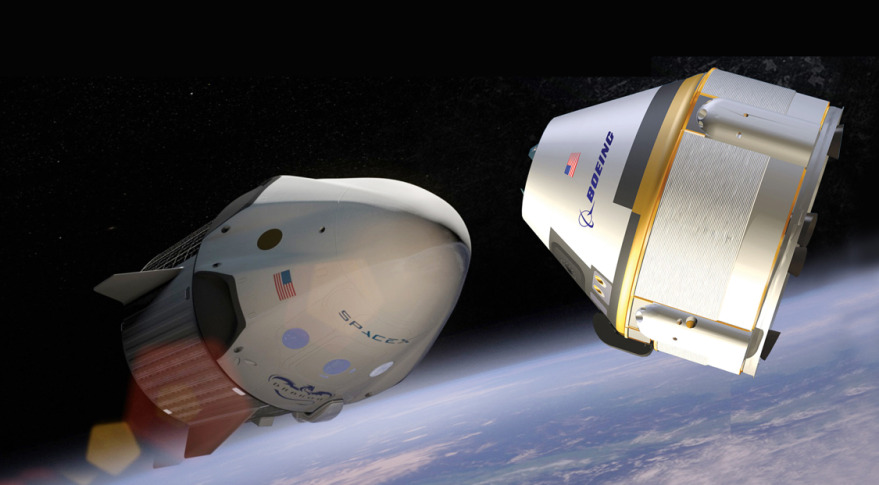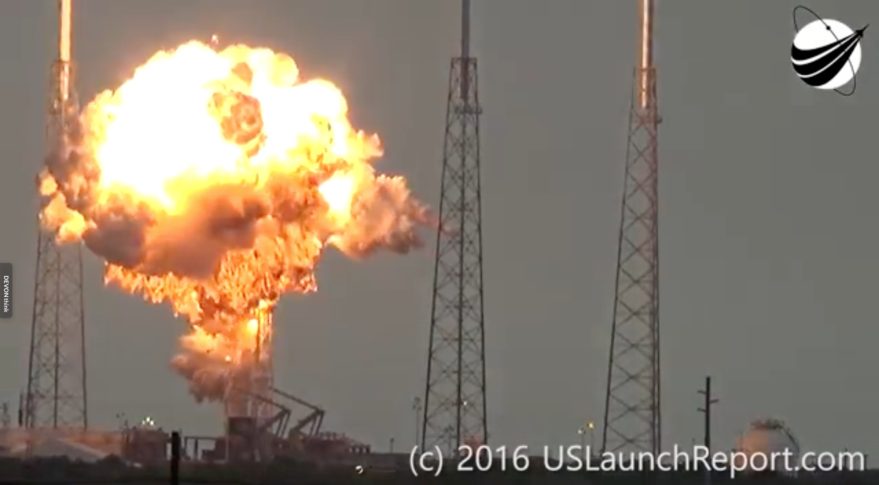Safety Panel Raises Concerns about SpaceX Falcon 9 Pressure Vessel for Commercial Crew Missions

WASHINGTON — An independent safety panel recommended NASA not certify SpaceX's commercial crew system until the agency better understands the behavior of pressure vessels linked to a Falcon 9 failure in 2016.
That recommendation was one of the stronger items in the annual report of the Aerospace Safety Advisory Panel (ASAP) released by NASA Jan. 11, which found that NASA was generally managing risk well on its various programs.
The report devoted a section to the composite overwrapped pressure vessels (COPVs) used to store helium in the second stage propellant tanks of the Falcon 9. The investigation into the September 2016 pad explosion that destroyed a Falcon 9 while being prepared for a static-fire test concluded that liquid oxygen in the tank got trapped between the COPV overwrap and liner and then ignited through friction or other mechanisms. [Watch: SpaceX, Boeing Launching Space Taxi Test Flights in 2018]
SpaceX has since changed its loading processes to avoid exposing the COPVs to similar conditions, but also agreed with NASA to redesign the COPV to reduce the risk for crewed launches. NASA has since started a "rigorous test program" to understand how the redesigned COPV behaves when exposed to liquid oxygen, the report stated.
ASAP argued that completing those tests is essential before NASA can allow its astronauts to launch on the Falcon 9. "In our opinion, adequate understanding of the COPV behavior in cryogenic oxygen is an absolutely essential precursor to potential certification for human space flight," the report stated, a sentence italicized for emphasis in the report.

The report added that NASA and SpaceX are working on an alternative design for the pressure vessels that does not involve the use of composite overwrap materials should the ongoing test effort fail. It warned, though, that the alternative design is heavier, which may require redesign of supporting structures within the liquid oxygen tank.
The report raised issues in general about the commercial crew program, including concerns that neither Boeing nor SpaceX, the two companies developing vehicles to transport NASA astronauts to and from the International Space Station, will meet a requirement of no greater than a 1-in-270 "loss of crew" (LOC) risk of an accident that causes death or serious injury to a crewmember. That includes, the report stated, a risk of no more than 1 in 500 for launch and re-entry.
Get the Space.com Newsletter
Breaking space news, the latest updates on rocket launches, skywatching events and more!
"The Panel has been monitoring the providers' progress in working toward the LOC requirements, and it appears that neither provider will achieve 1 in 500 for ascent/entry and will be challenged to meet the overall mission requirement of 1 in 200 (without operational mitigations)," the report stated. The "operational mitigations," such as on-orbit inspection, are intended to ease the overall 1-in-270 requirement.
At a Nov. 29 meeting of the NASA Advisory Council's human exploration and operations committee, Lisa Colloredo, deputy program manager for NASA's commercial crew program, said she expected the two companies to meet that requirement or come close to it. "We have a very difficult LOC requirement to meet, and we knew that when we going in," she said then, noting it was more stringent than the 1-in-90 requirement for the space shuttle at the end of the program.
ASAP, in its report, was skeptical that either company would meet those requirements. "NASA will need to determine if the risk portrayed by the analysis, with its large uncertainties, is acceptable," it concluded.
The panel expressed fewer concerns about other elements of NASA's human spaceflight program, including the development of the Space Launch System and Orion crew vehicle and continued operations of the ISS.
The report concurred with NASA's conclusion reached last year that putting crew on the first SLS mission, Exploration Mission 1, was technically feasible but would add "significant crew safety risk" and additional resources. NASA ultimately decided to keep the EM-1 mission uncrewed.
ASAP also recommended that NASA pursue development of a second mobile launch platform rather than modify the one being completed now. Those modifications are needed to accommodate the larger Block 1B version of the SLS, which will be flown on the second and subsequent SLS missions, but will create a gap of 33 months between the first and second SLS missions regardless of the status of SLS or Orion. NASA officials have said they are considering seeking funding for a second launch platform.
The panel said in its report it was encouraged by NASA's proposed Deep Space Gateway (DSG), a crew-tended habitat in cislunar space the agency is considering developing in conjunction with international partners in the 2020s. The Gateway is intended to develop experience in spaceflight beyond Earth orbit in preparation for later human missions to Mars, and can also support human spaceflight activities by the U.S. or other countries in the vicinity of the moon.
"In general, the Panel feels the DSG framework has excellent potential for appropriate risk mitigation related to a journey to Mars and looks forward to the ongoing detailed concept development," the report stated.
It did, though, warn that any plans for a human return the moon, including a change to national space policy announced by the Trump administration last month, will require additional funding. “If the direction for NASA in cislunar space now includes a mandated return to the moon's surface and no additional funds are supplied, it will create inevitable pressures on existing programs to execute safely," it stated.
This story was provided by SpaceNews, dedicated to covering all aspects of the space industry.
Join our Space Forums to keep talking space on the latest missions, night sky and more! And if you have a news tip, correction or comment, let us know at: community@space.com.

Jeff Foust is a Senior Staff Writer at SpaceNews, a space industry news magazine and website, where he writes about space policy, commercial spaceflight and other aerospace industry topics. Jeff has a Ph.D. in planetary sciences from the Massachusetts Institute of Technology and earned a bachelor's degree in geophysics and planetary science from the California Institute of Technology. You can see Jeff's latest projects by following him on Twitter.











